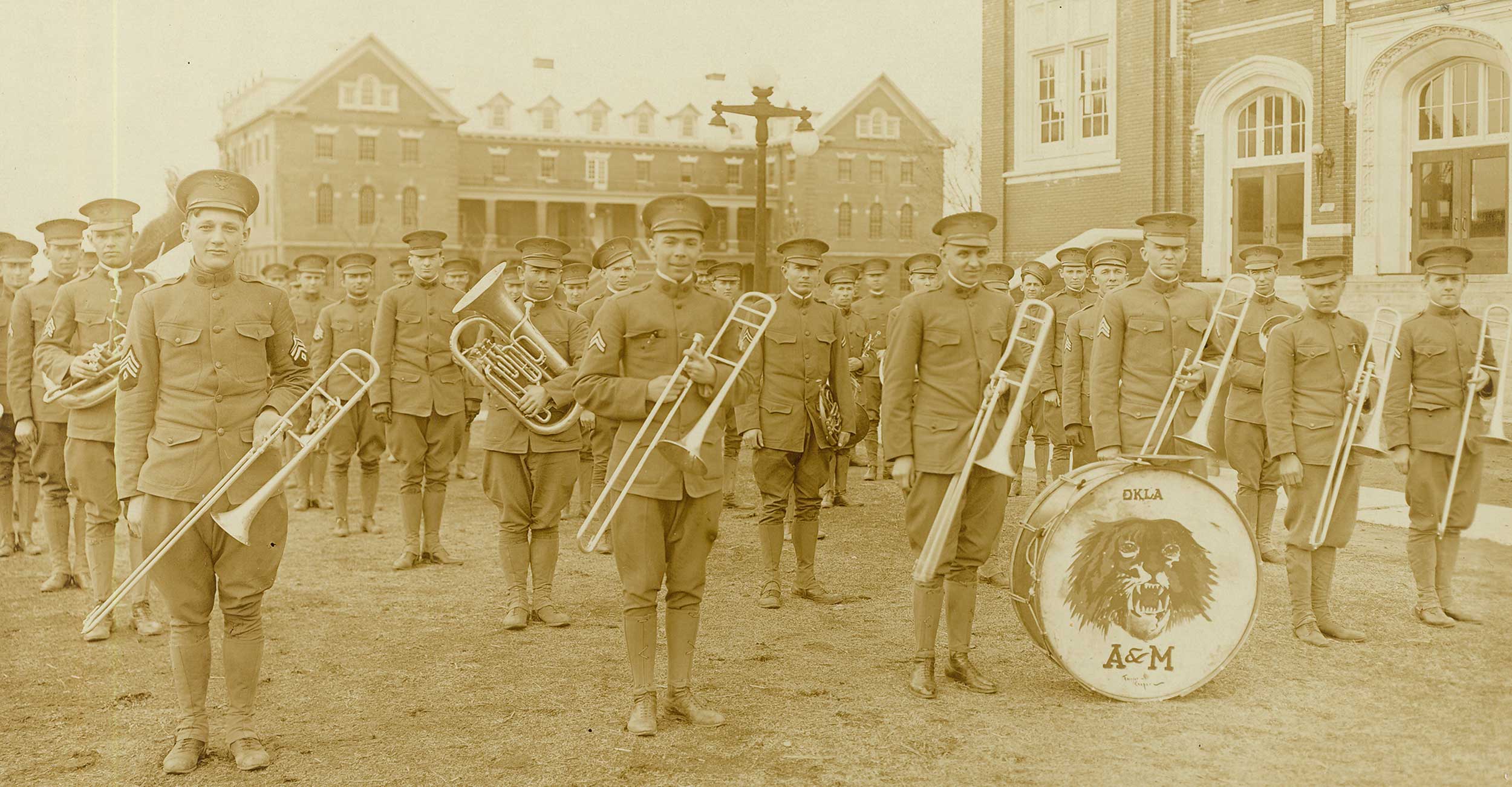
Tigers and Aggies and Cowboys, Oh My!
Thursday, April 27, 2023
Media Contact: Mack Burke | Associate Director of Media Relations | 405-744-5540 | editor@okstate.edu
In September 1899, young men attending Oklahoma Agricultural and Mechanical College organized an athletic association in preparation for the recruiting of sports teams, particularly football.
They had no coaches, and there wasn’t a physical education department on campus. John Fields, Agricultural Experiment Station director, served as an advisor to the new football squad with the support of several other faculty members.
There was little understanding of rules or penalties; even young men from the Stillwater community played on the OAMC football team. After their first game that fall, a loss to Kingfisher College, the opposing team’s newspaper referred to the Oklahoma A&M crew as the “Clodhoppers and Blacksmiths.”
Clodhoppers and blacksmiths wasn’t the brand, or identity, the young team desired.
TIME OF THE TIGER
Shortly after the humiliating loss, Professor George Holter’s chemistry class, meeting in the basement of the (Old) Central Building, decided it was time for the college team to create its own identity and select a mascot.
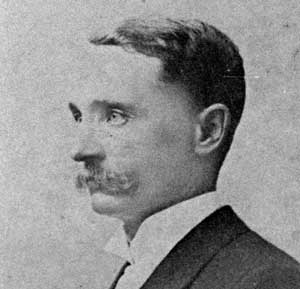
Students in the class admired Harry Thompson, a popular young faculty member who had a connection to Princeton University. His father, Rev. Henry Pendleton Thompson, had earned a divinity degree at Princeton. Princeton was well regarded and the most southern member of the Ivy League. Princeton teams were the “Tigers” and the school colors were orange and black. The class reasoned: Who wouldn’t fear the Tigers?
The chemistry students made their decision. OAMC athletic teams were to be known as the Tigers and their colors were orange and black. The rest of the student body and the football team accepted the proposal. The college in Stillwater would consider itself the “Princeton of the West,” or alternatively, the “Princeton of the Prairie.”
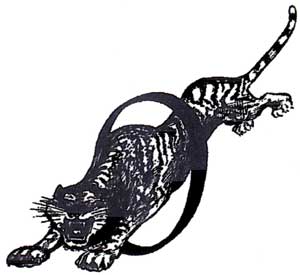
Before this momentous decision, each entering freshman class had adopted its own class colors, but these annual changes created a visual clash on campus and no consistency for the entire student body. Early athletic contests were mostly intramural occasions during college field day competitions. Freshmen, sophomores, juniors and seniors would each form teams to compete in these athletic events.
Occasionally, the academic colleges would select teams where the students majoring in agriculture, engineering, education, domestic science (Human Sciences), and science and literature (Arts and Science) would compete against each other. Flags and pennants of many colors would be displayed.
But beginning in the fall of 1899 with the initial intercollegiate athletic competitions, the only college colors displayed for these contests were orange and black.
During the next two decades, the OAMC athletic teams were known as the Tigers. It was common for colleges and universities of this era to identify a mascot to symbolize their teams and hopefully bring them good luck. While never utilizing a real tiger, nor a student dressed in a tiger outfit, images of tigers were widely used on campus and in the Stillwater community. Drum heads, pennants, advertisements and gathering places featured tigers.
In the Stillwater community surrounding the campus, there were locations known as the Tiger Tavern, Tiger Drug, Tiger Lunch, Tiger Sweetshop and an annual meeting known as the Tiger Roundup.
AGE OF THE AGGIE
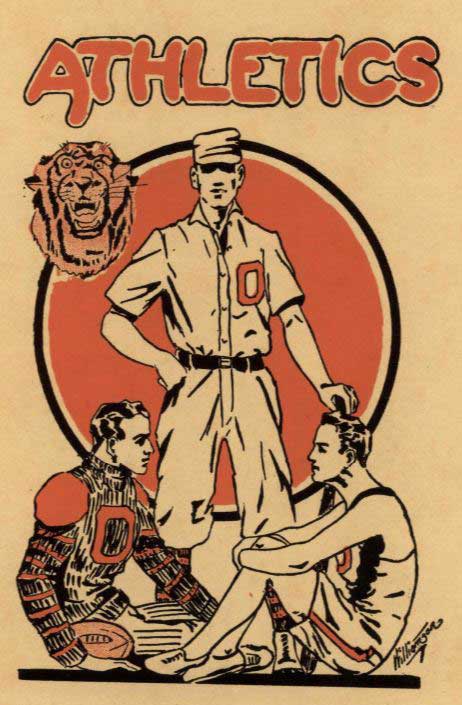
The early 1920s brought expanded use of the term “Aggies” for OAMC teams.
Many of the land-grant colleges in the Midwest were known as Aggies: Kansas Aggies (Kansas State), Iowa Aggies (Iowa State) and a few to this day retain the name such as the Texas A&M Aggies. In Stillwater, the term Aggies was used for the first time regarding athletic teams in 1915. Prior to this time, it was generally used in the college and local newspapers for only the School of Agriculture faculty and students.But by the 1920s, surrounding states increasingly used Oklahoma Aggies when identifying visiting athletic teams from Stillwater.
There were other developments that ushered in changes for the college at this time. Coach Edward Gallagher’s OAMC wrestling team was extremely successful at home and on the road. The football team also competed more regularly in surrounding states. Sports writers in Oklahoma City, Tulsa and at other colleges and universities began referring to the OAMC visiting squads as “Cowboys” based on their clothing preferences including cowboy boots and hats.
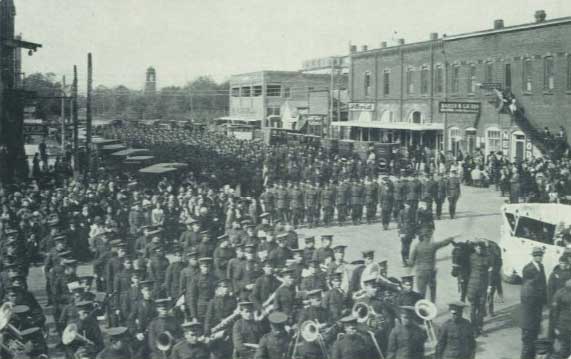
A Texan named J. Frank Dobie arrived in Stillwater as the new head of the English department in 1923. He inspired a new emphasis on stories, essays and writings at the college about ranch life and cowboy culture in the Southwest. Cowboys were to be admired and venerated, he said. Dobie was a colorful character and remained at Oklahoma A&M until 1925 when he returned to Texas for fame and fortune, but he left behind a new pride in being a cowboy.
The November 1923 Armistice Day parade in Stillwater included an old cowboy and blacksmith from Perkins, Oklahoma. Frank Eaton was in his early 60s and riding a horse in the parade to commemorate the end of World War I. Eaton and his old pals frequented parades and events all around Oklahoma. OAMC alumnus Leslie L. Swim, from the class of 1920, other alumni and then current students decided Eaton was the perfect personification of an Oklahoma cowboy.
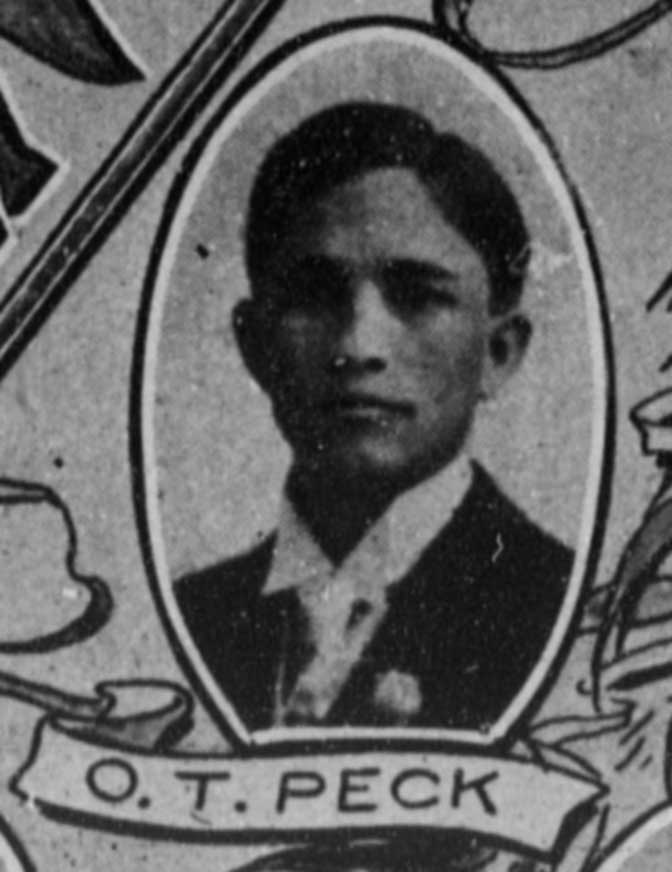
The Swim family had operated a student store and hangout since 1912 on Elm Street just east of the campus and received permission from Eaton for a caricature of him to be drawn. The Swim brothers — Leslie, Paul and Elmer (known as Bus) — then placed the caricature, called Pistol Pete, on items sold in their store.
The Cowboy moniker became quite popular and the Peck brothers, who owned a competing student store and multiple businesses at the corner of Knoblock and College (University) Avenue jumped on the theme. The Peck boys — Oliver, Clarence and Harold — were also OAMC graduates. The oldest, Oliver, had started a bookstore on campus in 1907 and then moved to the Knoblock location in 1909.
They eventually built Peck’s Lodge, also known as Aggieville, that had a lunch room, bookstore, barber shop, cleaners, drugstore, shoe store and beauty parlor.
Their advertisement in the spring 1924 OAMC college yearbook was the first to feature the caricature of a distinctive looking cowboy resembling Frank Eaton.
CHANGE TO COWBOYS

The Oklahoma Aggies had competed in the Southwest Conference at the beginning of the century, but the college applied for membership in the Missouri Valley Conference on Dec. 9, 1924.
The MVC accepted their application and the OAMC teams began athletic competitions in 1925 with a new set of rivals. In a conference that already contained the Kansas State Wildcats and Missouri Tigers, there had been growing discussions in the Stillwater community to consider replacing the Tigers as the college team mascot. In the meantime, the term Aggies was increasingly utilized and Tigers was dropped. The 1924 college yearbook was the last to use Tigers when referring to any athletic team and the student newspaper dropped the term as well.
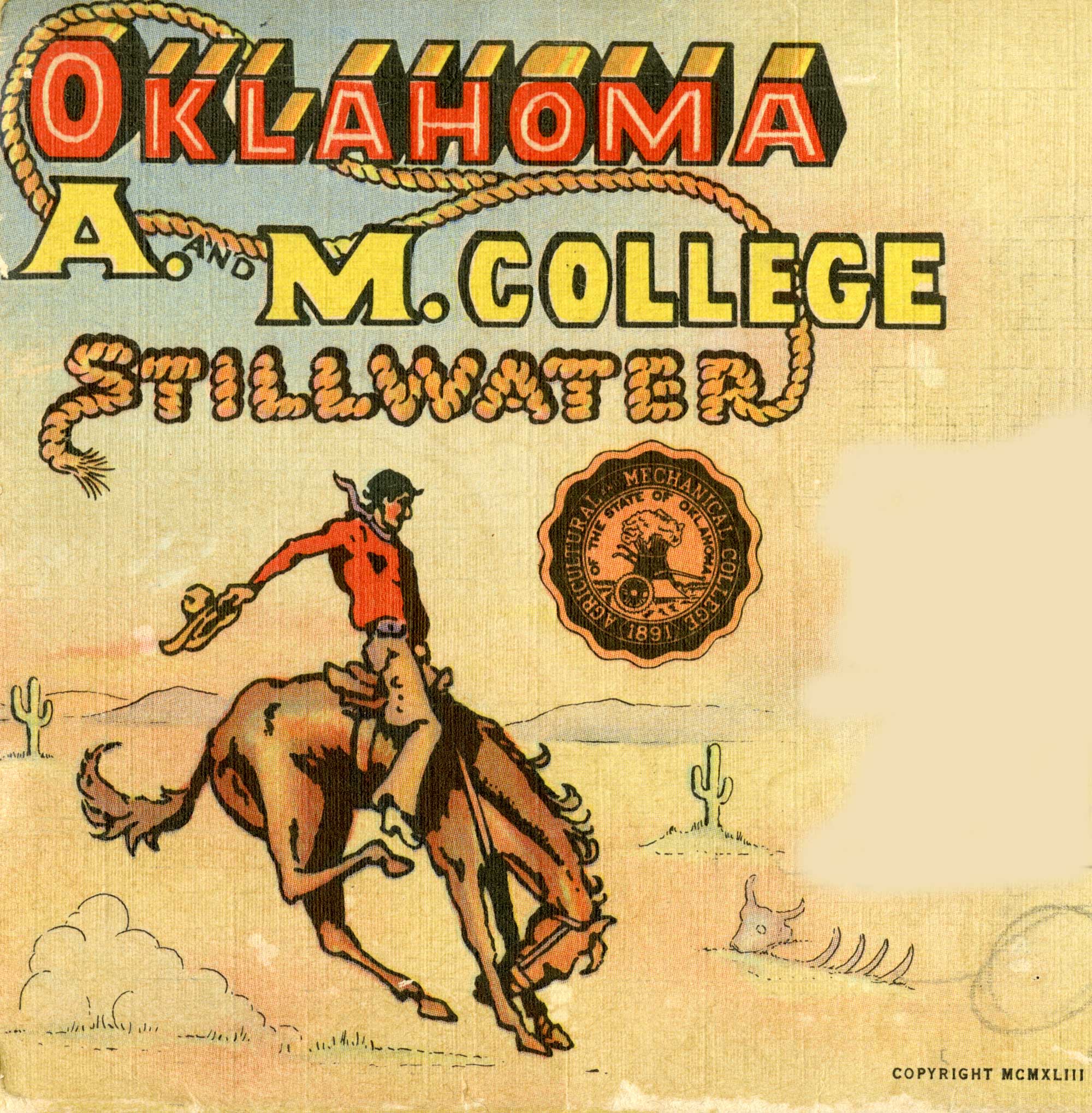
None of the mascot deliberations or decisions took place in any official capacity. The student newspaper, local businesses and alumni groups seemed to be the leaders in the discussions for a new mascot. A number of brand possibilities were proposed; from regional animal species such as buffaloes, cougars and bobcats, to naming selections from Native American nations and terminology. There were suggestions related to herding livestock in the Southwest such as: waddies, punchers, pokes, cowpokes, cow punchers and bullwhackers. Other suggestions involved those related to law enforcement: marshals, outlaws and bandits.
Few records exist from this time documenting university administration, physical education department, athletic director or athletic council participation in the mascot selection or discussions.
There was a reference to a 1926 athletic council meeting authorizing Gallagher, the athletic director, to produce and distribute 2,000 balloons for sale at home football games that fall. The balloons were imprinted with the slogan “Oklahoma Aggies – Ride ‘em Cowboy.” By the mid-1920s, all references to Tigers were gone, and the athletic teams were referred to as the Cowboys or Aggies with the caricature of Pistol Pete found on merchandise sold around campus increasing in popularity.
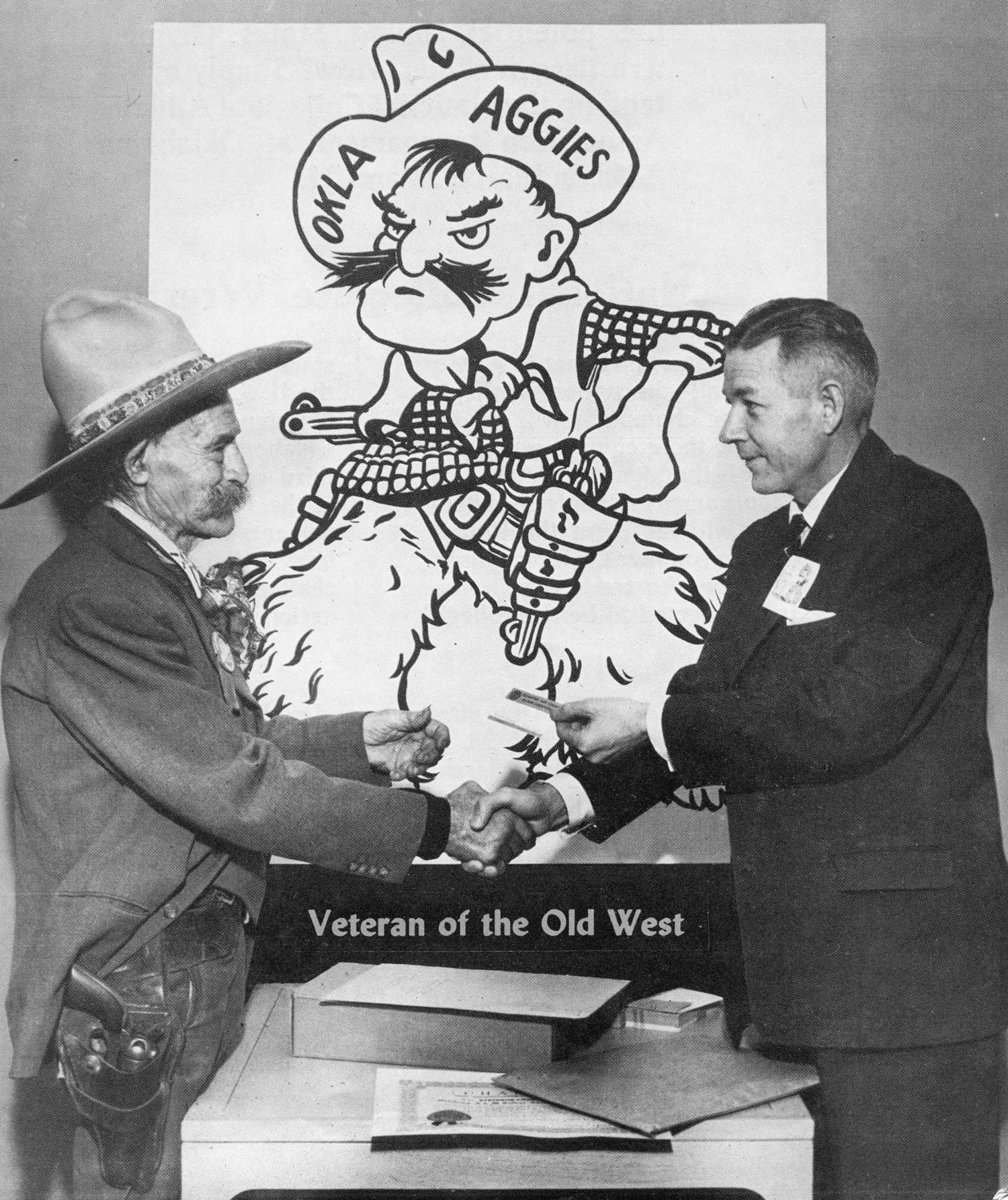
Through the years, Eaton continued visiting Stillwater and the OAMC campus when appearing at local events. He was a popular, entertaining and well-liked personality. In the early 1950s, Eaton began a collaboration with Eva Gillhouse, a Hollywood screenwriter and author, to compile and record his cowboy tales. Published in 1953, his book, Pistol Pete: Veteran of the Old West, increased Eaton’s local celebrity status.
After the book’s release, Eaton, who was then in his 90s, was invited as a speaker for Dr. B.B. Chapman’s Oklahoma history classes, student and alumni organization meetings, and other events.
The legend of Pistol Pete continued an upward trajectory and admiration for Eaton grew as well.
On May 15, 1957, OAMC changed its name to Oklahoma State University of Agricultural and Applied Sciences. The following year, the college left the Missouri Valley Conference after joining the Big Eight.
Eaton, the unofficial symbol and caricature of the Cowboys, passed away at his home in Perkins on April 8, 1958. In the fall of 1958, the Cowboys started the football season in their new conference with the first home game on Sept. 27 against North Texas State. They won the game and finished the season with eight wins and three losses, ranked as the No. 19 football team in the nation.
At Lewis Field, a student dressed in cowboy attire for the first time, wearing a large paper-mache head resembling Eaton. The OSU Cowboys were a brand, and they had a mascot named Pistol Pete.
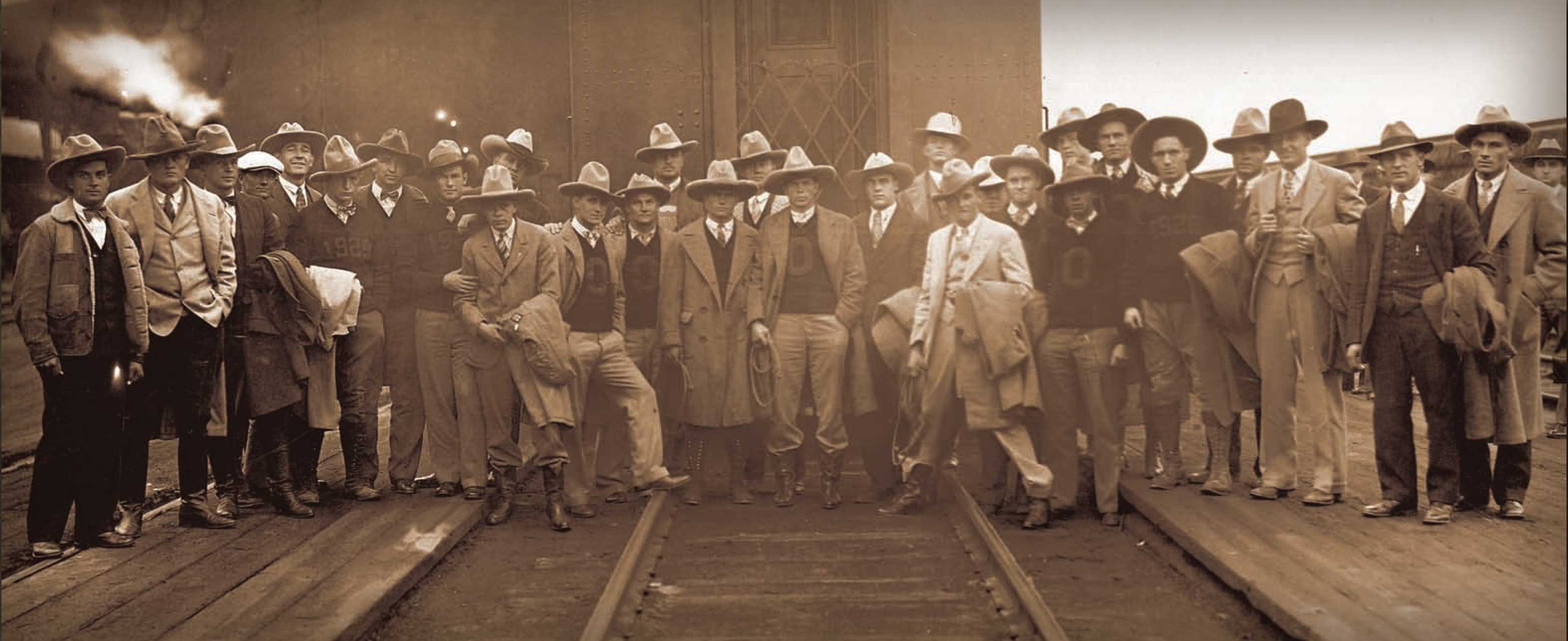
Photos By: OSU Archives
Story By: David C. Peters | STATE Magazine
